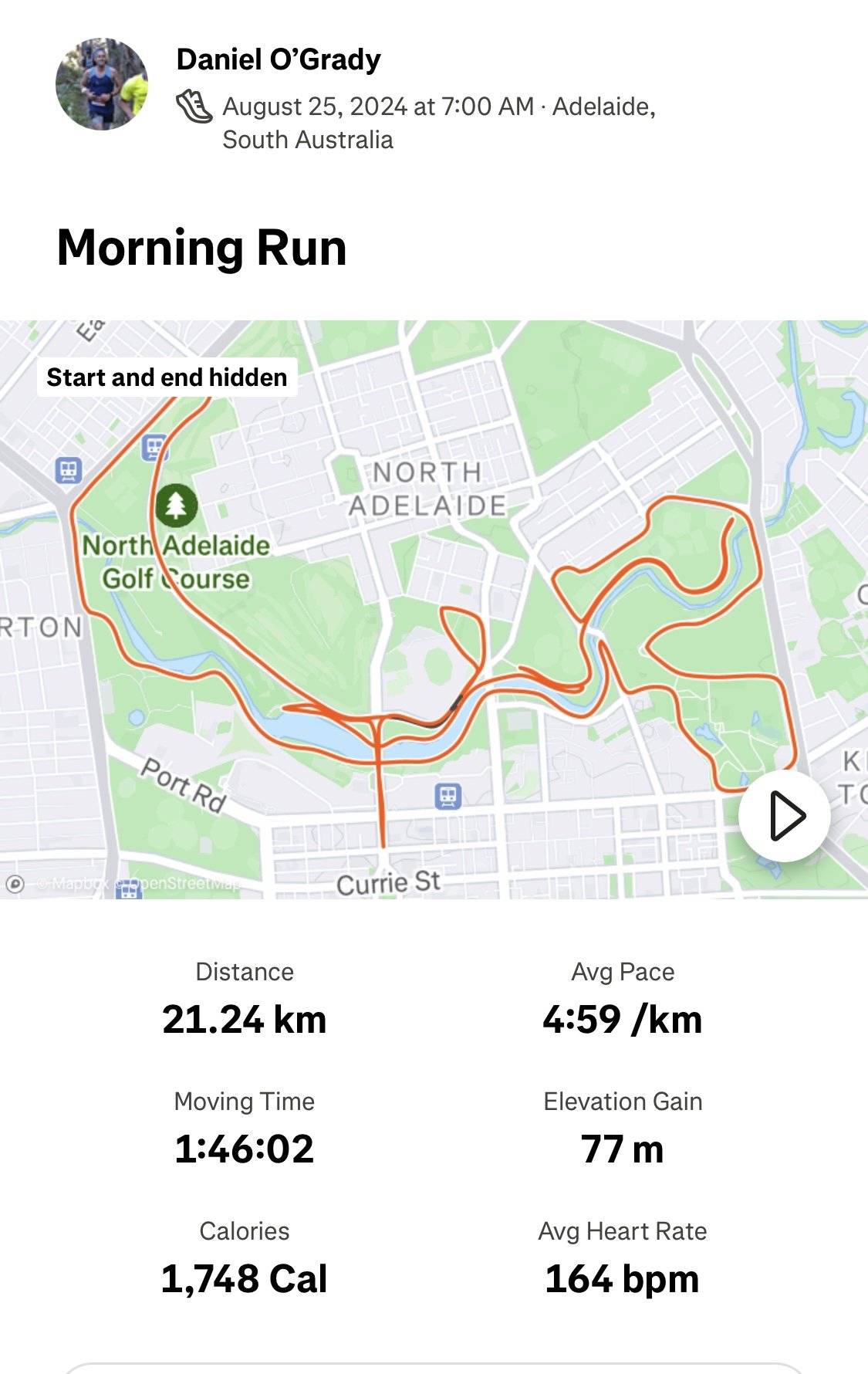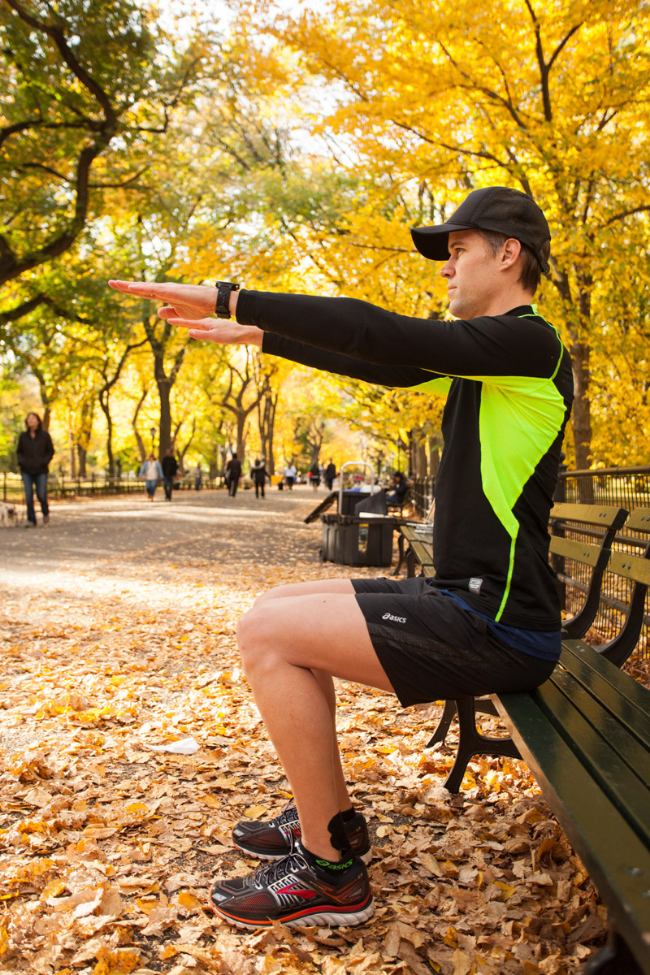Sometimes injuries are a blessing in disguise. They force you to re-examine your training style and open you up to other possibilities in the way you go about doing things.
Unfortunately running injuries are common and being forced into a lay off for a few weeks/months can be quite daunting. Being told you can't run can be a serious blow to a runner's sense of self. You suddenly realise how addicted you are to the physical and emotional payoffs that running brings.
Most runners tell me that there is nothing else quite like the endorphin buzz that running gives you.
Why runners are vulnerable to injury
One of the downfalls of running is that it's very repetitive and demanding on certain parts of the body that are vulnerable to overload. Common areas include: knees, hips, ITB's, achilles, calf muscles and hamstring issues.
Most runners generally have very good pain thresholds. This comes as a blessing AND a curse. Niggles that are ignored over a long period of time tend do have a tendency to develop into something more serious.
If you are in pain, there is a good chance your Physio will recommend taking a short break from training to allow your tissues to recover and heal properly.
To help you get through your injury, try the following exercises, which are designed to:
1. Maintain your cardio-vascular fitness
2. Encourage blood flow and oxygen to assist the healing process
3. Re-build your foundation so that you come back better and stronger that before
DISCLAIMER** Of course check with your physio to get the green light before trying any of these exercises**
Nutritious Movement
If you compare exercise to eating, running is like eating dessert and your foundation exercises (below) are like your main course.
It's not healthy to only be eating dessert - running should be a part of wide base of 'nutritious movement'.
This approach will sustain you and help you find longevity in your running career.
1. Swimming
We all know the benefits of getting in the water: the non-weight bearing movement of your body that helps decompresses the joints and allows you a full body workout without the stress of gravity wearing on your body.
Try and build up to some intervals, for example 10 x 100m. This will really help optimise your breathing and cardio-respiratory performance.
Even if you don't like swimming, just being in the water will be beneficial, assisting recovery. Standing in the cold water at the beach in the middle of winter is refreshing and surprisingly therapeutic.
2. Kettlebell Strength Workout
A solid kettlebell workout is the closest thing I've come to experiencing the high that matches up with a good run. Everyone should own a kettlebell or two. If you have never tried, find a good personal trainer and get them to show you the basics over a few sessions. Try swings, squats, lunges and other variations to get your body moving and re-build your capacity.
3. Pilates
Research tells us the biggest risk factor for an injury is a previous injury. Pain and injury leads to compensatory movement patterning that helps us get through the short term but isn't an ideal long term solution. Pilates help you to learn the principles of dynamic core alignment, so you will create a solid foundation that naturally leads to optimal performance in sport and life.
Term 3 Pilates kicks of July 26th - Reserve your place here
4. Stair workout
Stronger glutes = better running and lower risk of re-injury. Stairs will also send your heart rate sky rocketing, boosting your VO2 max.
5. Hiking
Hiking some trails in the great outdoors has a few benefits for runners:
build better balance on uneven terrain
breathe some fresh air
learn how to 'slow down' and enjoy the scenery
get to know your running friends better - talking is easier when you're not struggling to breathe!
6. Boxing
Stressed? Angry? Let your fists do the talking. Boxing will challenge your cardio-vascular system like nothing else. Working with a trainer will quickly fine tune your power and precision and bring an intensity to your workout that may rival your running training.
7. HIIT (High Intensity Interval Training)
Try something like the 7 minute workout or ask your local personal trainer to design you a program. Add a challenge by using a foam roller or Swiss Ball to your workout. Try a combination of burpees, squats, step-ups and mountain climbers for starters.
8. Yoga
Reset your fundamental movement patterning, connect with your breathing and jump start your healing process by activating the para-sympathetic nervous system. Most runners could benefit from finding a little bit more flexibility. Restorative / yin yoga is particularly recommended for runners to keep their bodies balanced.
9. Stand-Up Paddle-boarding
Stand-up paddle boarding is an ideal way to strengthen your core (obliques in particular that are important for runners) and also gives your quads a nice burn. Also will improve your balance (especially if you find some fun waves to have a go at!).
10. Elliptical / Cross Trainer
Minimal weight-bearing, using the elliptical machine is an nice way to get your blood and oxygen flowing. It's also an easy way to keep an eye on your heart rate and push some challenging intervals sessions...crank up the resistance!
11. Bonus Tip: Avoid Cycling
Despite it's popularity, I DON'T advise cycling as a good alternative to running as cycling strongly activates the hip flexors, and can mess up your muscle balance around your hip, knee and lower back.
I would advise your to either choose cycling or running as your main form of exercise. If you are triathlete, there are some specific exercises you can do to help reduce the negative effects of cycling. You can email directly dan@kinfolkwellness.com.au and I will give you the details.
Over to you...
What form of exercise have you found most beneficial when you can't run?
I'd love to hear your thoughts below.




















































